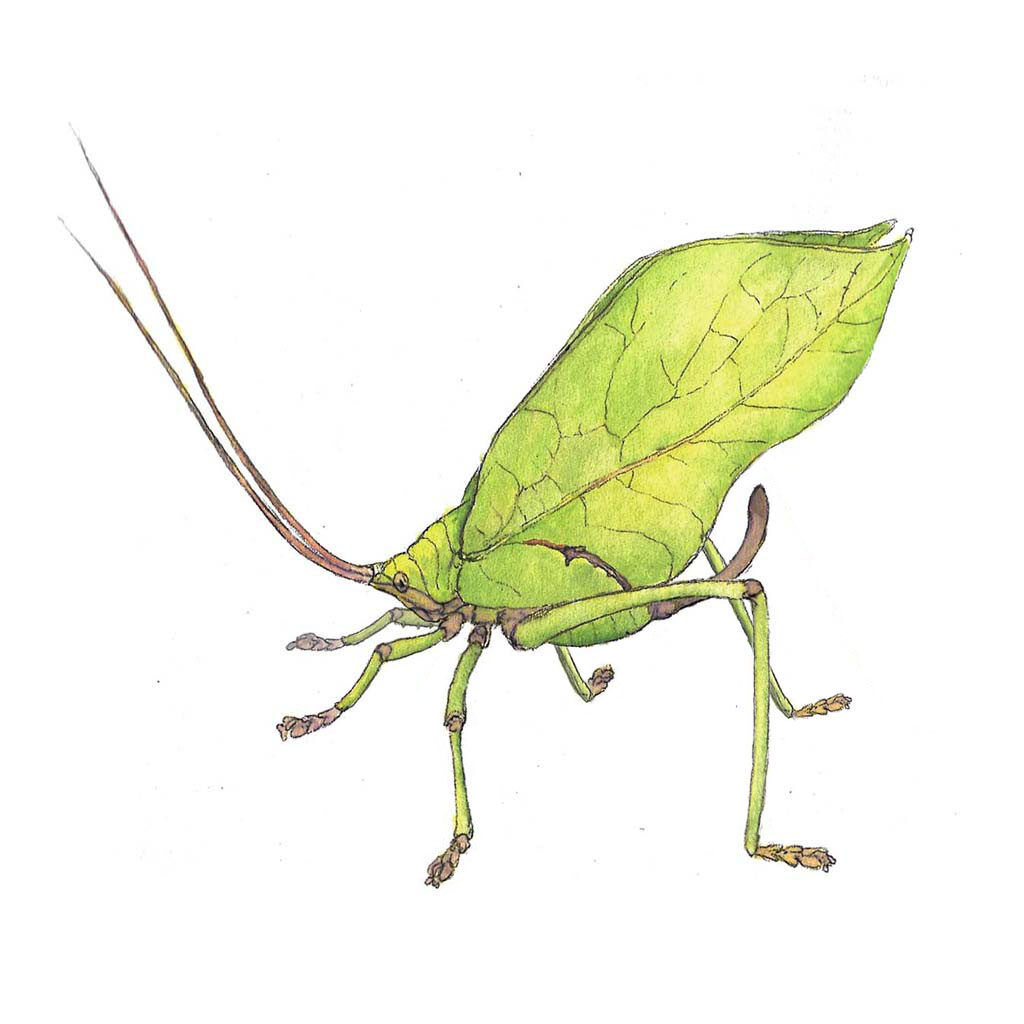Leaf Katydid

I’m lying in my hammock when I notice a leaf walking across the veranda a few feet away. No, wait. That’s not possible – I’m pretty sure leaves don’t walk… A closer look reveals a Leaf Katydid imitating a leaf scudding across my veranda. And very convincingly, too, with perfect chartreuse green coloration, credibly detailed leaf veins, even a brown scar of insect damage, plus sturdy brown/green twig-like legs.
All these characteristics are usually helpful in hiding it from its predators, snakes, birds, spiders, frogs and toads, and even bats. I probably wouldn’t have noticed it had it kept to its proper habitat. Her proper habitat, I should say, because as she turns away from me I can see the long, brown ovipositor at the end of her abdomen, with which she inserts her eggs into plant stems.
Actually, that’s one way you can tell whether you’re looking at a katydid or a grasshopper, because they look a lot alike. But grasshoppers have short antennae and blunt ovipositors, while katydids have long antennae and sword-like ovipositors. This one definitely carries a sword. Males don’t have ovipositors, but the antennae will be long like this. I wasn’t able to identify it even down to genus, because there are 6,400 species of katydids in the world, and this one isn’t hugely different in any way that would make an easy ID. More about katydids here.
The many different kinds of katydids have a variety of different-sounding calls. Apparently katydids were named by people hearing a US species whose calls sound like “Katy-did, Katy didn’t, Katy-did….etc.” The sound our leaf katydid makes is more like the snickety-snick of electric scissors or hair clippers. You can hear one doing that here. This is the one we hear right here in our rainforest.
Keep an eye out for leaf katydids. They are remarkable works of forest art.